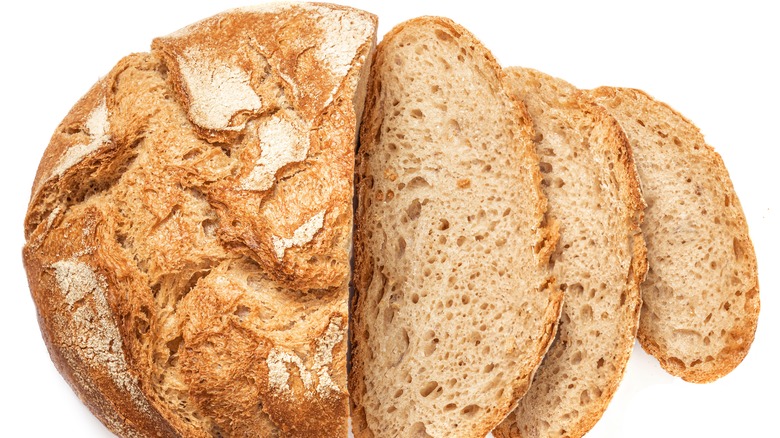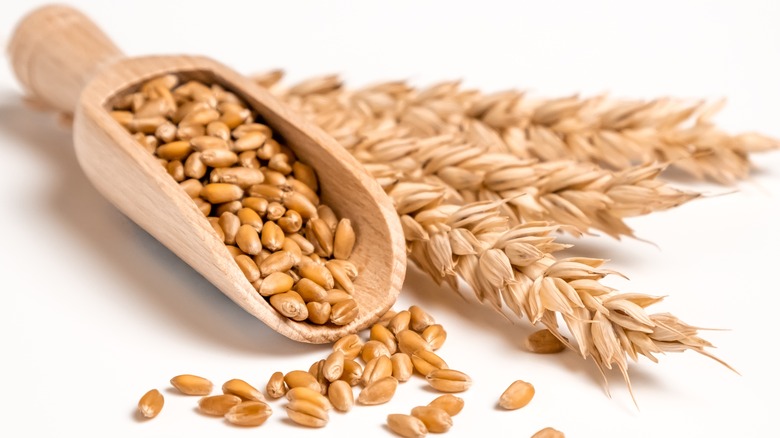What White Whole Wheat Flour Is Actually Made Of
If you've been to the baking aisle in the grocery store to pick up a bag of whole wheat flour, you might have noticed a type of flour marked as white whole wheat. If you've seen this flour and dismissed it, thinking it was made using a bleaching process similar to how white flour is made, think again. King Arthur Baking explains that many people see white whole wheat flour as either a mix of white and wheat flour, or as something that's been processed, but that's not the case.
When most people think of wheat flour, we may conjure images of the reddish brown color that is commonly used in commercially produced wheat breads or crackers. But did you know there are a number of types of wheat? As Masterclass outlines, there are six different varieties, hard red winter and hard red spring wheat, soft red winter wheat, hard white wheat, soft white wheat, and durum wheat, which is mostly used for pasta as well as Middle Eastern and Mediterranean flatbreads.
A different variety of wheat
The terms red and white refer to the color of the bran, also known as the fibrous outer layer of the wheat kernel, but white whole wheat doesn't contain the same compounds that are found in red wheat that give it a more robust flavor as well as a reddish color, as reported by Whole Grains Council. According to The Kitchn, white whole wheat flour is made from spring or winter white wheat, which has a lighter color and milder flavor, yet it contains the same nutritional value found in whole wheat flour.
As detailed in a Serious Eats article, white whole wheat flour is made by milling hard white wheat, and this type of flour contains the edible parts of the whole kernel — which is what makes it as nutritious as regular whole wheat. The article further explains that white whole wheat flour can be substituted in recipes that call for whole wheat flour or the more coarse Graham flour. If you've been hesitant to try white whole wheat, consider incorporating it into your next recipe that calls for whole wheat flour, especially if you're looking for something that has a milder flavor than traditional whole wheat.

